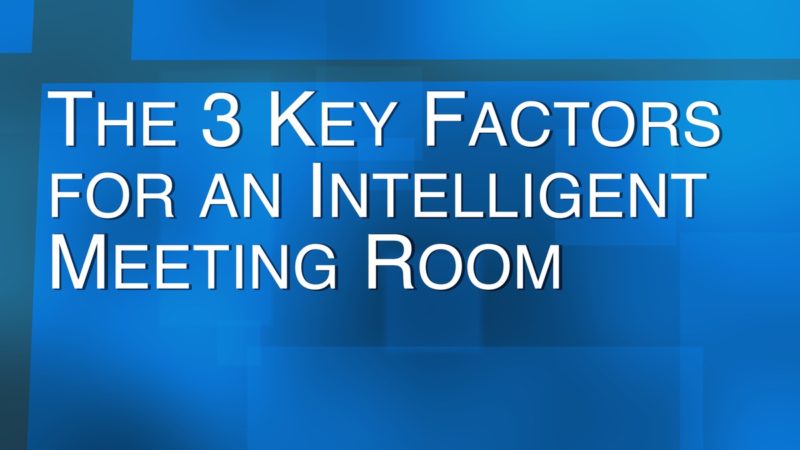
3 Key Factors for Making the Intelligent Meeting Room Work for Your Organisation
Organisations are beginning to understand the need for SMART Office technology and one facet of it is the Intelligent Meeting Room. But what is an Intelligent Meeting Room and how do you make it work for your organisation?
In this short video, Ascentae Managing Director Jon Knight explains. He sets out the 3 key factors to consider and what to build into your thinking for successful planning.
The 3 Key Factors for an Intelligent Meeting Room
Transcript
Speaker Jon Knight
We’re hearing a lot more about Intelligent Meeting Rooms and the need for SMART Office Technology. From an Ascentae perspective, we have specifically looked at this idea of an Intelligent Meeting Room. And we’ve thought about it in three different aspects.
Firstly, and probably most importantly, we looked at it for intelligence for the users. So, people coming into meeting rooms, how can that experience be improved? And from our perspective, we’re looking at things like AI – Artificial intelligence – and how that technology can be incorporated into a user’s experience of a space… where, actually, the user can just walk in, very simply start up the meeting room – or start up the meeting if it’s a video call, for example. And the whole experience is a seamless one that just happens for them. And we think that’s absolutely critical in order to drive adoption of an Intelligent Meeting Room.
The second aspect we’ve looked at is the intelligence for the stakeholders. So, from the perspective of a stakeholder who’s investing in Intelligent Meeting Rooms, what they are going to ultimately recognise as value is hopefully pleasurable experiences for their users first and foremost, hearing that users are getting immense joy and pleasure out of actually using the spaces is obviously critical.
But much more importantly, beyond that, it’s about data. And it’s about understanding the usage of the spaces and not just the basic occupancy data that you can get, but also understanding things like average number of people that are in a meeting room. Because you may have some meeting rooms that have been designed to accommodate much larger groups and actually find that they are used very infrequently by groups of that size, as an example, but also – long term – looking at things like anonymous data of how users are actually using the space.
In other words, where are they actually working within the rooms? And this is part of our belief that from the perspective of room types, there needs to be a broadening of the types of rooms that are available to users in order to support different tasks, different ways of working, which from our perspective, we’ve looked at under the banner of activity-based working.
And then the final thing is important for the actual specifiers of a meeting room. So, in our case, we work with reseller partners, and we believe it’s critically important to them to have confidence they are recommending technology that is Microsoft Teams and Zoom certified, for example. And has all of the correct certifications from the different vendors that they might be integrating with, but also can be highly scalable and delivering software updates to add new features and new enhancements to the technology that they’re investing in today – to benefit from those new features in the future.
So, lots to go into there from the perspective of an Intelligent Meeting Room, but that’s the three different themes that we’ve thought of when it comes to designing a concept of what an Intelligent Meeting Room is and does.